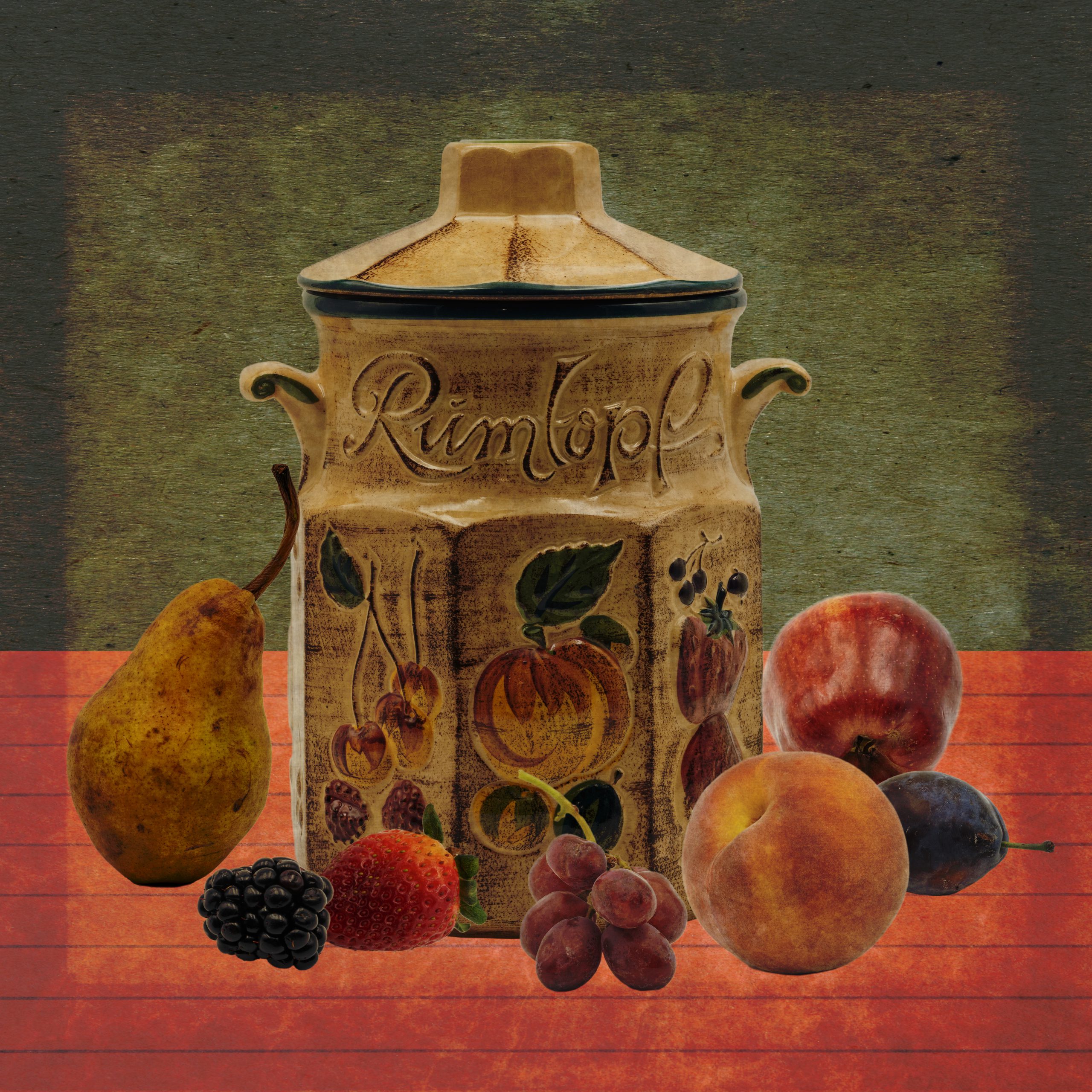Ingredients
- Fresh Fruit, not bruised, as they come into season
- Sugar
- Rum (60 proof); I prefer white rum as it imparts no colour
- 4 to 5 liter Clay or porcelain (not glass) crock
Steps:
- Prepare fruit as outlined below
- Gently mix 500g (1 pound) of fresh fruit with 250ml (1 cup) sugar.
- Let stand 1 hour before placing into crock
- Add enough rum to completely cover the fruit by 1/2″. Keep the fruit submerged by inverting a small plate over the fruit and weight it down.
- Cover the crock with plastic wrap, and then put the lid on the crock.
- Allow the mixture to stand at room temperature
- Add more fruit as they come into season (prefer the first batch of fruits as they have the best taste) following the steps above.
- After the addition of each fruit it takes about 2 weeks before fermentation is well under way again. The mixture will take at least two to three months to mature after you have added the last fruit. That is why the Rumtopf is traditionally begun in May or June, finished in late September / early October and eaten during the Christmas season. Gently stir before using.
Fruits
A selection of any or all of the following:
- Apricots: wash, pitted, unpeeled, halved
- Cherries (sour and/or bing): wash, pitted, remove stem, whole
- Grapes: wash, remove stem, whole
- Melons: peel, remove seeds, cut into cubes
- Peaches / Nectarines: wash, pitted, peeled and quartered
- Pears: peeled and quartered
- Plums: wash, remove stem, halved, with/without skin
- Raspberries/Blackberries: do not wash, sort carefully, whole
- Red Currents: wash, remove stem
- Strawberries: wash, remove stems, whole or halve large fruits
- Some say blueberries and apples do not do well in Rumtopf (blueberries can become fibrous)
Notes:
- As we have a global supply chain, many of the fruits are available year round. This means you can purchase all the fruits at once and then make the Rumtopf in one shot. For my crock, 2.5 to 3 kg (5-6 pounds) of fruit will fill it, and this produces about 4 litres of the “compote”, which I preserve in about eight 500ml jars. Any extra is consumed at the end of the jarring process.

